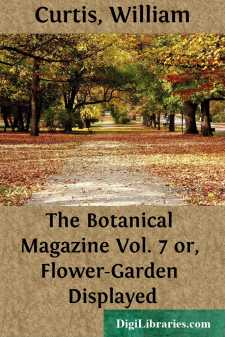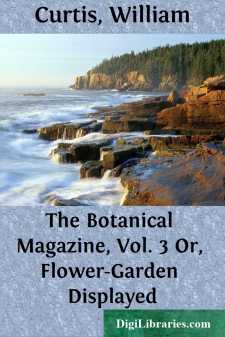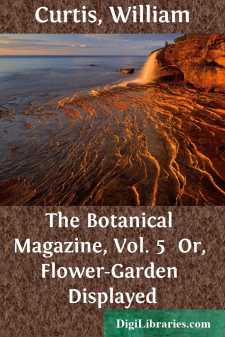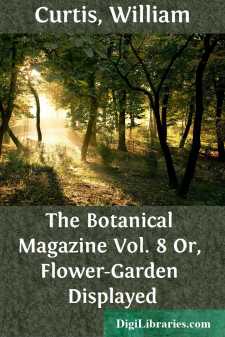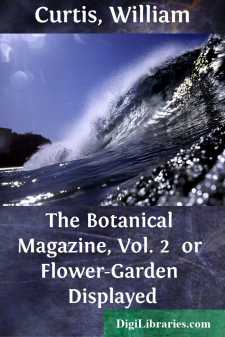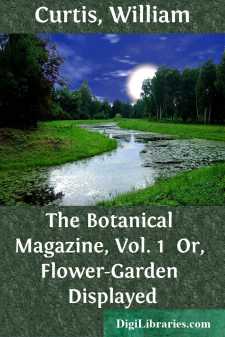Categories
- Antiques & Collectibles 13
- Architecture 36
- Art 48
- Bibles 22
- Biography & Autobiography 813
- Body, Mind & Spirit 142
- Business & Economics 28
- Children's Books 15
- Children's Fiction 12
- Computers 4
- Cooking 94
- Crafts & Hobbies 4
- Drama 346
- Education 46
- Family & Relationships 57
- Fiction 11829
- Games 19
- Gardening 17
- Health & Fitness 34
- History 1377
- House & Home 1
- Humor 147
- Juvenile Fiction 1873
- Juvenile Nonfiction 202
- Language Arts & Disciplines 88
- Law 16
- Literary Collections 686
- Literary Criticism 179
- Mathematics 13
- Medical 41
- Music 40
- Nature 179
- Non-Classifiable 1768
- Performing Arts 7
- Periodicals 1453
- Philosophy 64
- Photography 2
- Poetry 896
- Political Science 203
- Psychology 42
- Reference 154
- Religion 513
- Science 126
- Self-Help 84
- Social Science 81
- Sports & Recreation 34
- Study Aids 3
- Technology & Engineering 59
- Transportation 23
- Travel 463
- True Crime 29
The Botanical Magazine, Vol. 6 Or, Flower-Garden Displayed
by: William Curtis
Categories:
Description:
Excerpt
Colutea Frutescens. Scarlet Bladder Senna.
Class and Order.
Diadelphia Decandria.
Generic Character.
Cal. 5-fidus. Legumen inflatum, basi superiore dehiscens.
Specific Character and Synonyms.
COLUTEA frutescens fruticosa, foliolis ovato-oblongis. Linn. Syst. Vegetab. ed. 14. Murr, p. 668. Ait. Hort. Kew. V. 3. p. 56. Mill. Icon. 99.
COLUTEA æthiopica, flore purpureo. Breyn. Cent. 70. t. 29.
N181.
Of the several species of Colutea cultivated in our garden the one here figured, is distinguished by the brilliancy of its' flowers, the largeness of its pods, and the downy appearance of the under side of its leaves.
It appears from the Hortus Kewensis to have been cultivated by Mr. James Sutherland as long since as the year 1683 it was not however generally introduced to our gardens till the time of Miller, who figured it in his Icones, it was then understood to be an Æthiopian plant; Mr. Aiton since describes it as a native of the Cape also; of course, we find it more tender than most of its kindred, and hence it is usually regarded as a greenhouse plant; yet, as it is not destroyed by a small degree of frost, it will frequently, like the myrtle survive a mild winter in the open border, especially if trained to a wall: it is rarely of more than two or three years duration.
It is readily raised from seeds sown in the open ground, plants from which flower the August following, and, in favourable seasons, ripen their seeds; in order, however, that they may ripen them with more certainty, Miller, recommends the sowing them early on a gentle hot-bed.
A dry soil suits this species best.
[182]
Salvia Aurea. Golden Sage.
Class And Order.
Decandria Monogynia.
Generic Character.
Cor. inæqualis. Filamenta transverse pedicello affixa.
Specific Character and Synonyms.
SALVIA aurea foliis subrotundis integerrimis, basi truncatis dentatis. Linn. Syst. Veget. ed. 14. Murr. p. 71. Ait. Hort. Kew. V. 1. p. 45.
SALVIA Africana frutescens folio subrotundo glauco, flore magno aureo. Comm. Hort. 2. 183. t. 92.
N182.
Such as are delighted with the singular rather than the beautiful appearances of plants, cannot fail of ranking the present species of sage among their favourites.
It been called aurea, from the colour of its flowers, ferruginea would perhaps have been more expressive of them; when they first open indeed they are of a yellow colour, but they quickly and constantly become of the colour of rusty iron.
The leaves are nearly round, and have a pleasing silvery hue: a few of them only, and those chiefly at the extremities of the young shoots, are of the form described by Linnæus in his specific character of the plant, and hence Commelin's description (vid. Syn.) is to be preferred, as leading us with more certainty to a knowledge of the plant; the colour of the leaves, the colour and unusual magnitude of the blossoms, are indisputably the most striking features of the species, and therefore to be resorted to: for my own part, as a friend to the advancement of the science, rather than as the follower of that great man, I see no good reason why colour should not in many instances, especially where expressive characters are wanting, form a part of the specific character in plants, as well as in animals: we are told indeed of its inconstancy....



